Abstract
The lack of cell translocation and the resulting formation of nonspreading colonies of mutants of the gram-negative gliding bacterium Cytophaga johnsonae have been correlated with the loss of cell surface features of the organism. These cell surface traits include the ability to move polystyrene-latex beads over the cell surface and the ability to be infected by bacteriophages that infect the parent strain. In order to assess whether these traits reflect structures or functions that actually play a role in gliding, we studied a mutant (21A2I) selected for its inability to form spreading colonies; it is deficient in sulfonolipid, lacks bead movement ability, and is resistant to at least one bacteriophage. The provision of cysteate (a specific sulfonolipid precursor) restores lipid content and gliding to the mutant; hence, the lipids are necessary for motility. Growth with cysteate also restores bead movement and phage sensitivity. In order to determine the temporal relationship of these traits, we undertook a kinetic study of the appearance of them after addition of cysteate to the mutant. One predicts that appearance of a trait essential for cell translocation will either precede or accompany the appearance of this ability, while a nonessential trait need not do so. Sulfonolipid synthesis was the only trait that appeared before gliding; this is consistent with its established importance for motility. Bead movement and phage sensitivity first appeared only after gliding started, suggesting that the machinery involved in those processes is not necessary, at least for the initiation of gliding.
Full text
PDF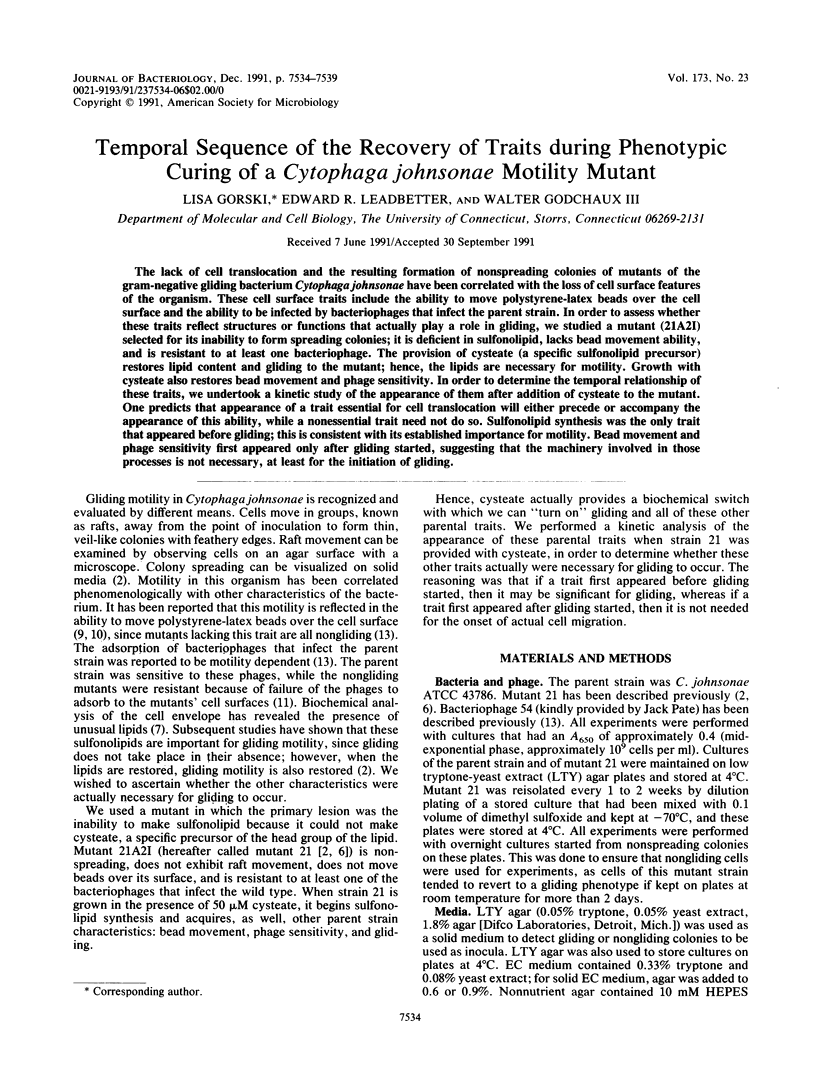
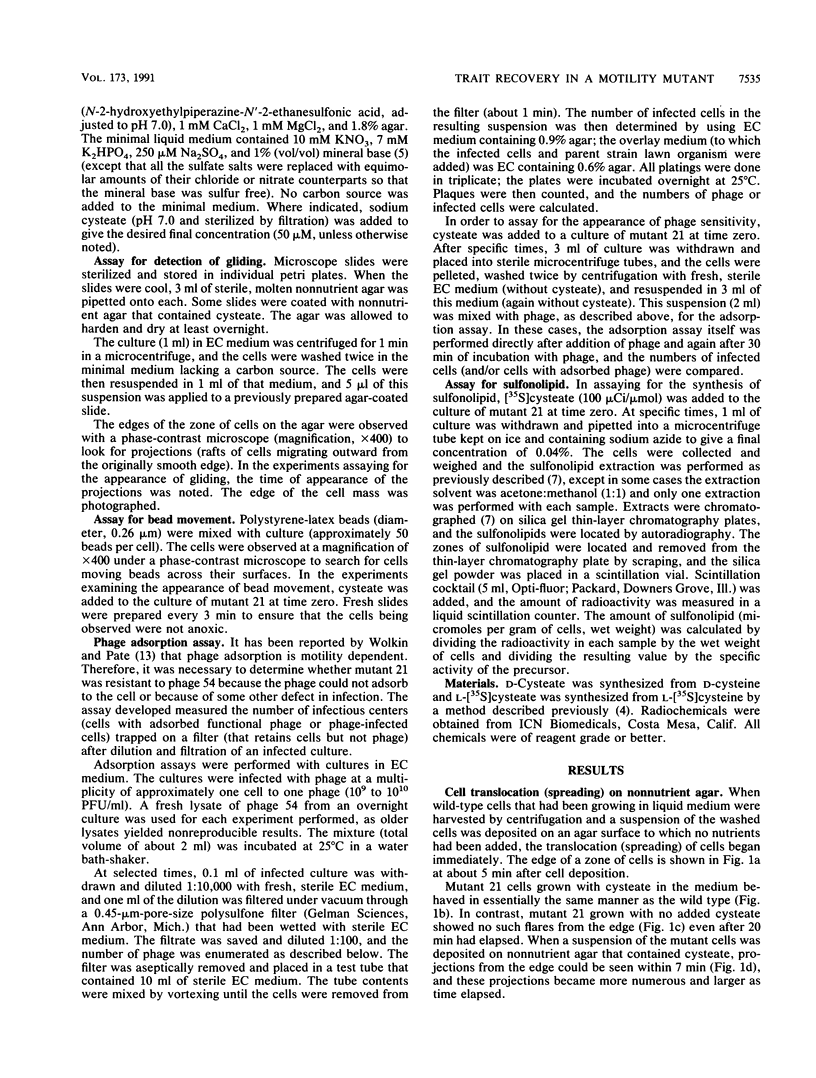
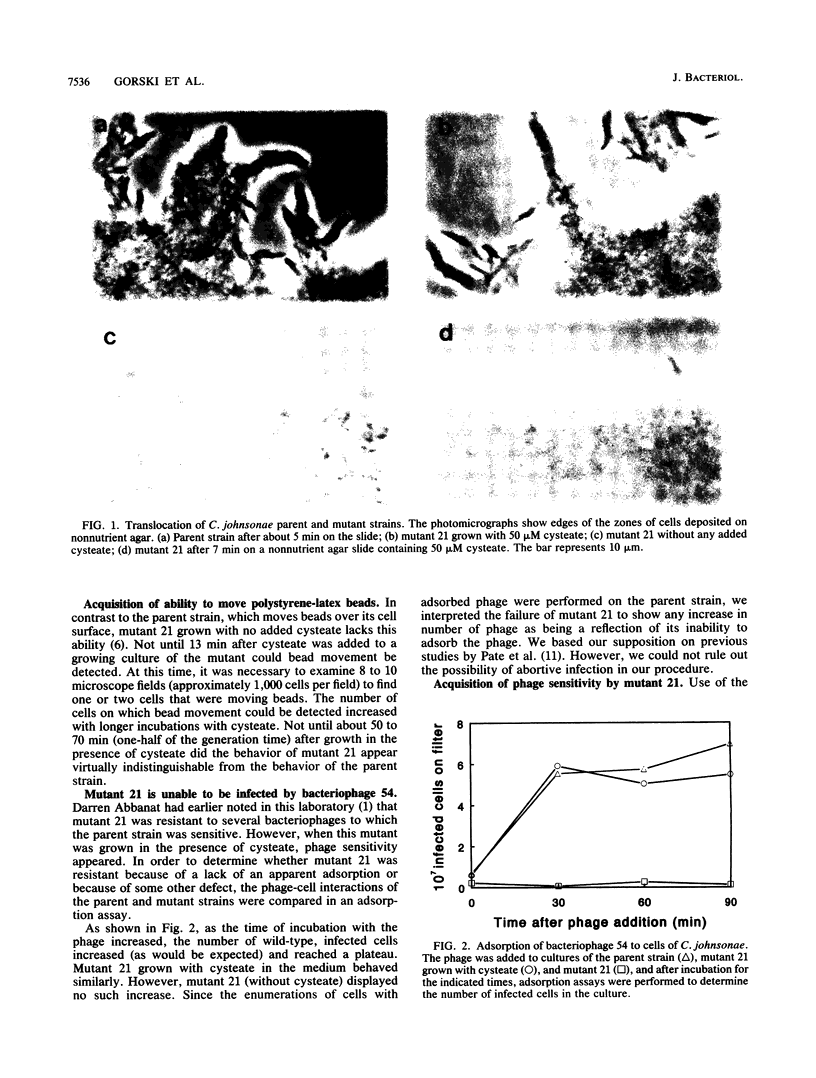
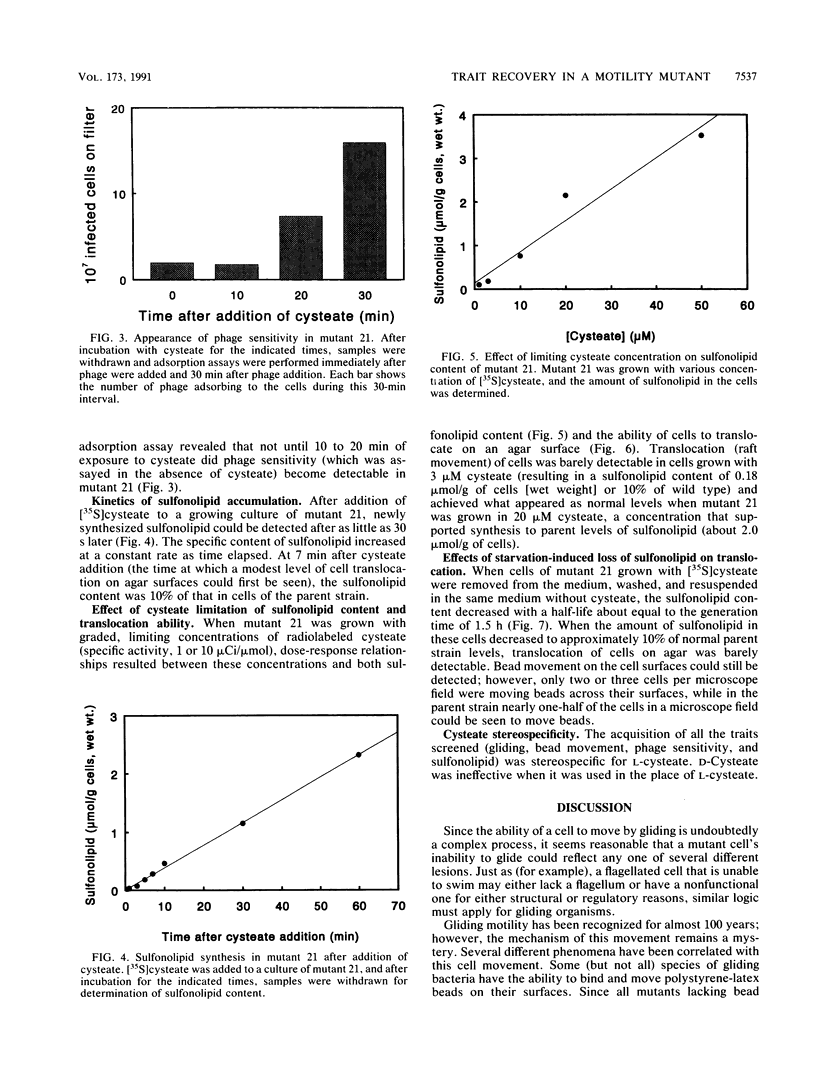
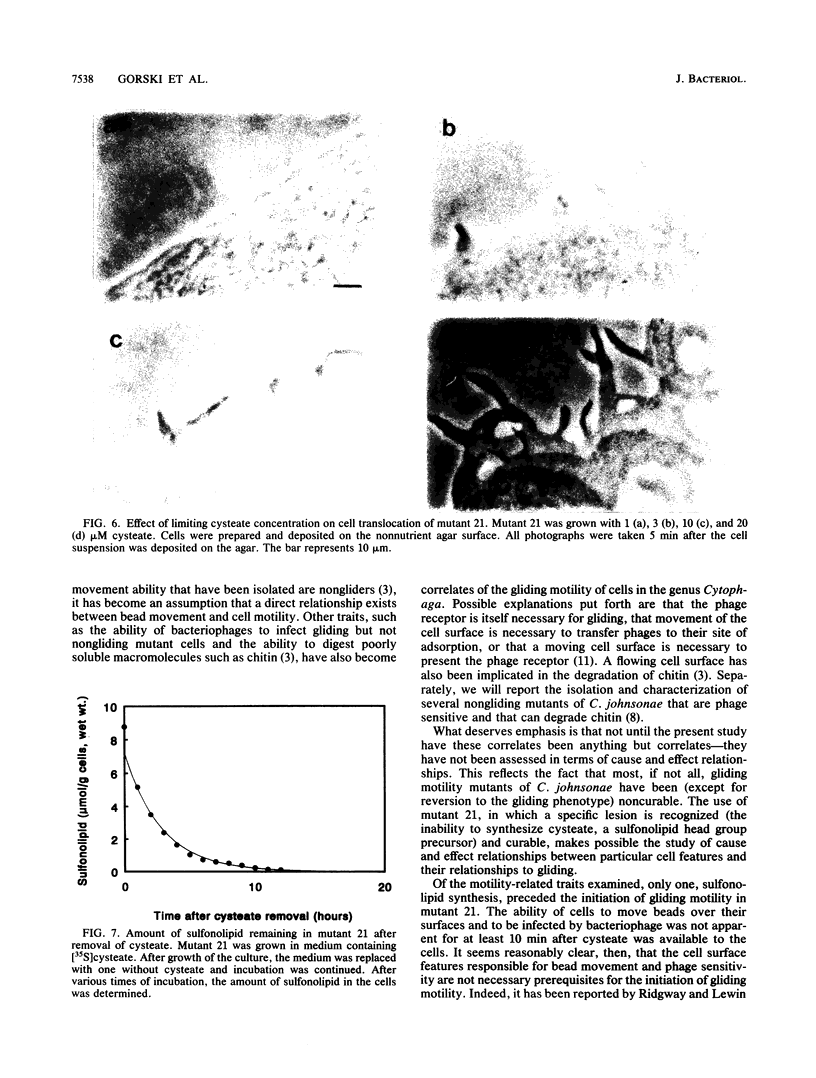
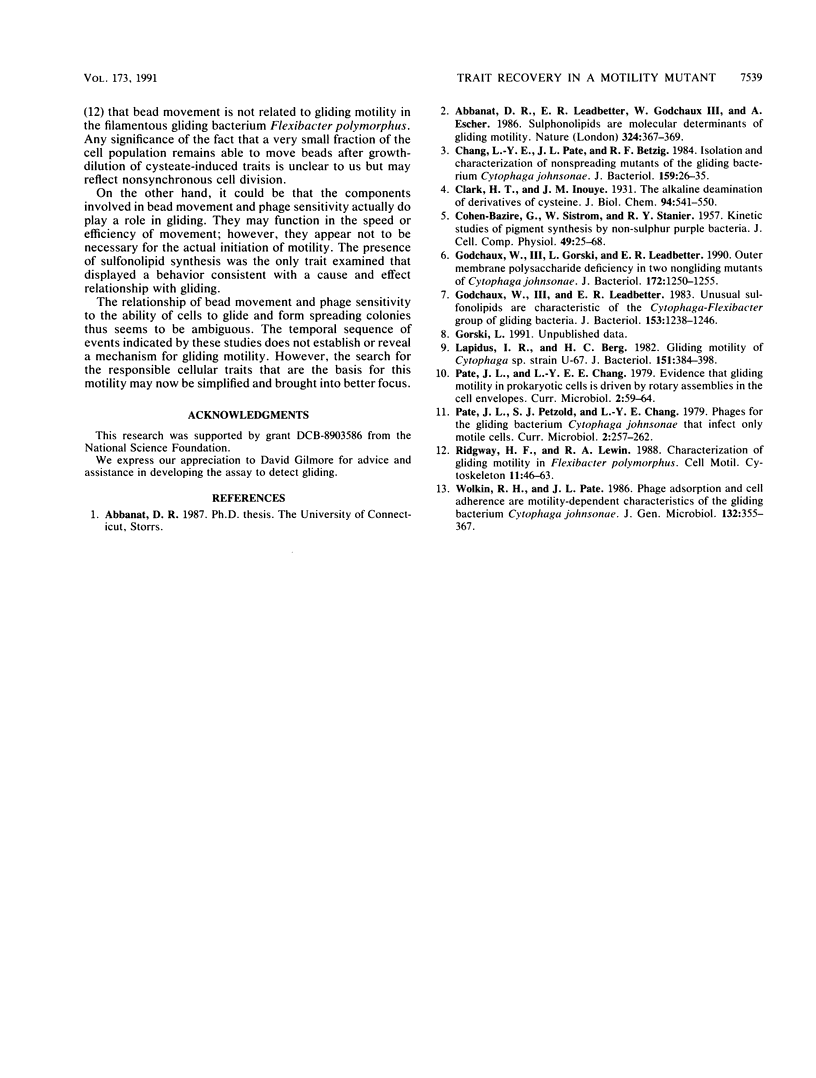
Images in this article
Selected References
These references are in PubMed. This may not be the complete list of references from this article.
- COHEN-BAZIRE G., SISTROM W. R., STANIER R. Y. Kinetic studies of pigment synthesis by non-sulfur purple bacteria. J Cell Physiol. 1957 Feb;49(1):25–68. doi: 10.1002/jcp.1030490104. [DOI] [PubMed] [Google Scholar]
- Chang L. E., Pate J. L., Betzig R. J. Isolation and characterization of nonspreading mutants of the gliding bacterium Cytophaga johnsonae. J Bacteriol. 1984 Jul;159(1):26–35. doi: 10.1128/jb.159.1.26-35.1984. [DOI] [PMC free article] [PubMed] [Google Scholar]
- Godchaux W., 3rd, Gorski L., Leadbetter E. R. Outer membrane polysaccharide deficiency in two nongliding mutants of Cytophaga johnsonae. J Bacteriol. 1990 Mar;172(3):1250–1255. doi: 10.1128/jb.172.3.1250-1255.1990. [DOI] [PMC free article] [PubMed] [Google Scholar]
- Godchaux W., 3rd, Leadbetter E. R. Unusual sulfonolipids are characteristic of the Cytophaga-Flexibacter group. J Bacteriol. 1983 Mar;153(3):1238–1246. doi: 10.1128/jb.153.3.1238-1246.1983. [DOI] [PMC free article] [PubMed] [Google Scholar]
- Lapidus I. R., Berg H. C. Gliding motility of Cytophaga sp. strain U67. J Bacteriol. 1982 Jul;151(1):384–398. doi: 10.1128/jb.151.1.384-398.1982. [DOI] [PMC free article] [PubMed] [Google Scholar]
- Ridgway H. F., Lewin R. A. Characterization of gliding motility in Flexibacter polymorphus. Cell Motil Cytoskeleton. 1988;11(1):46–63. doi: 10.1002/cm.970110106. [DOI] [PubMed] [Google Scholar]




